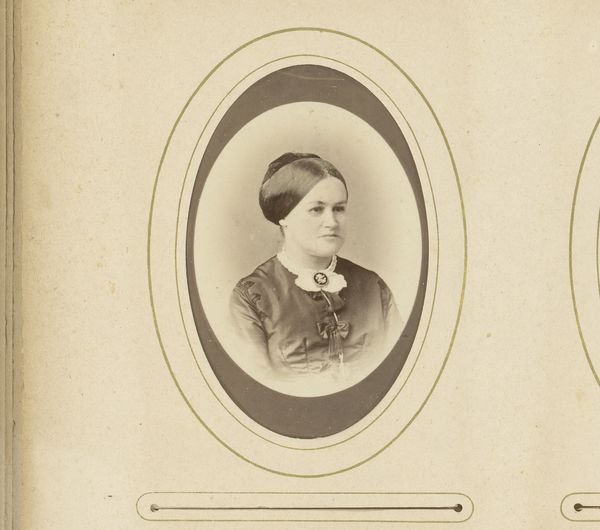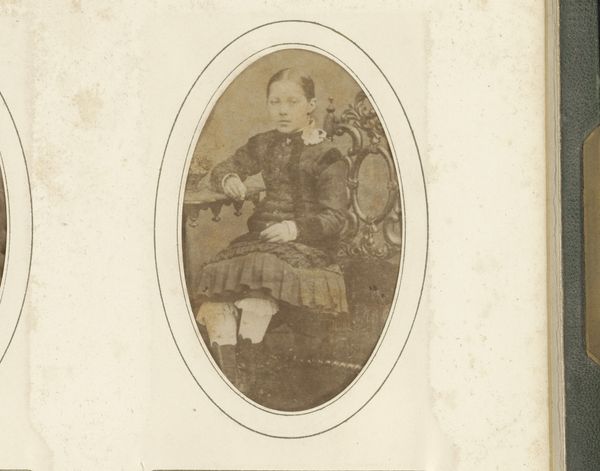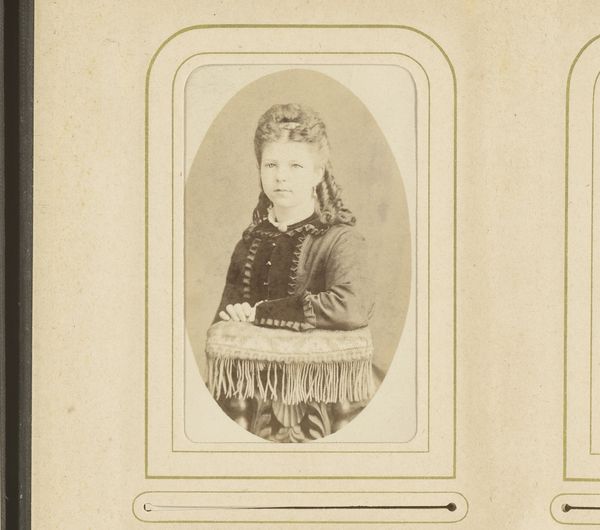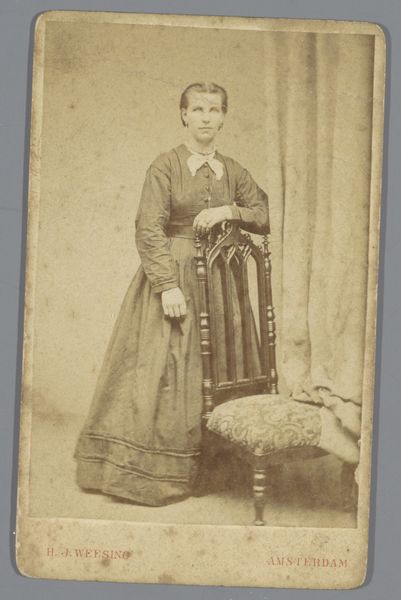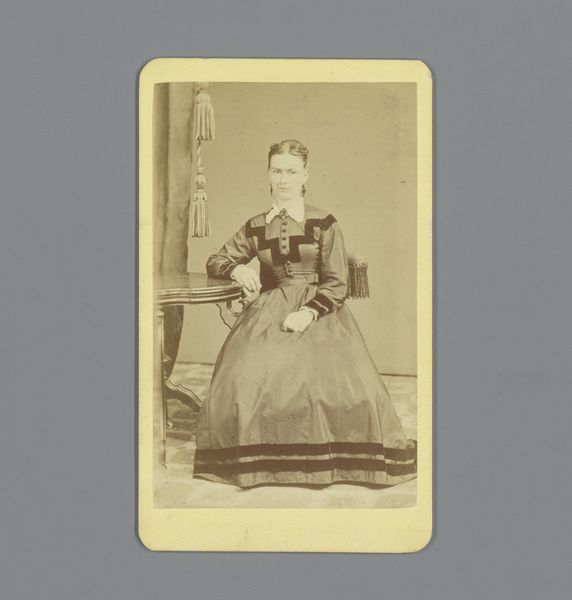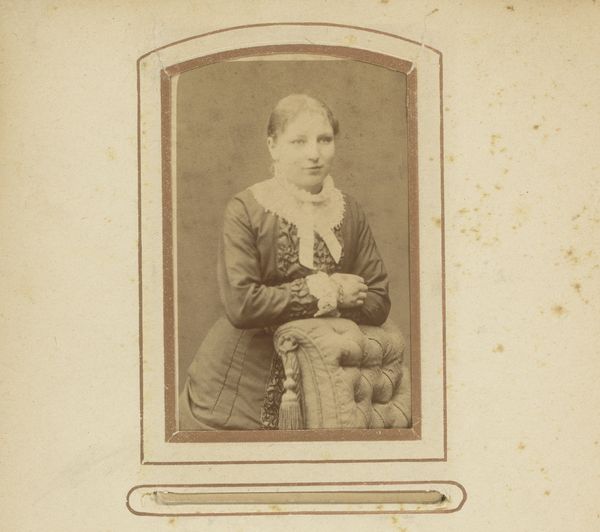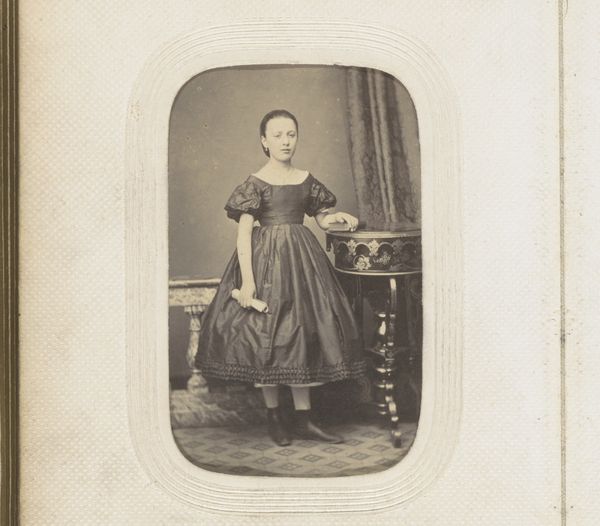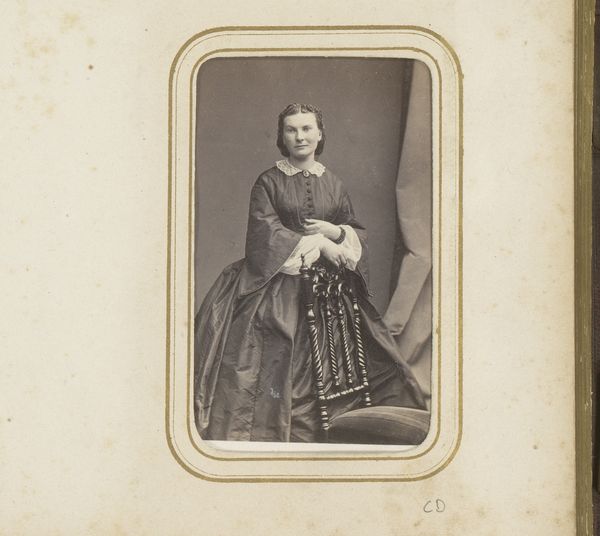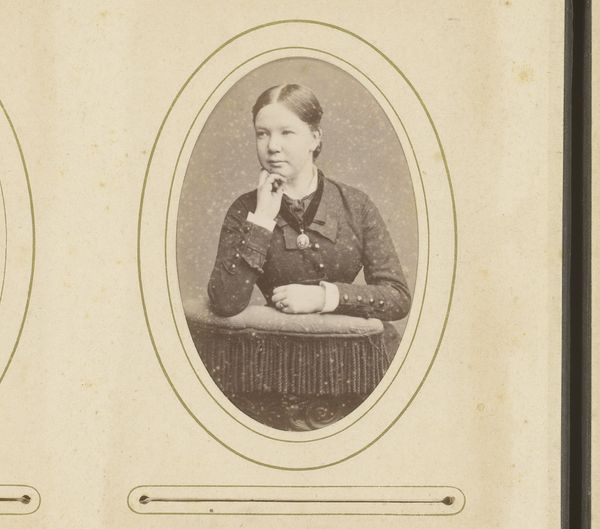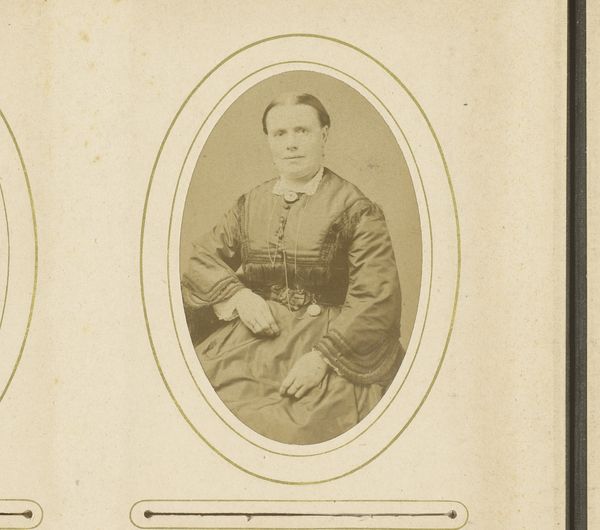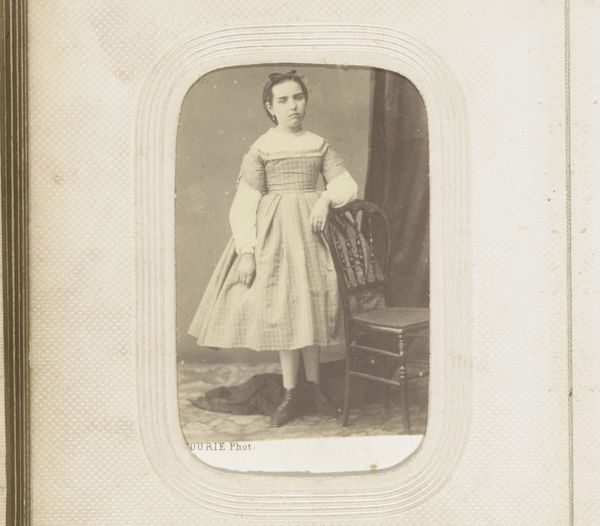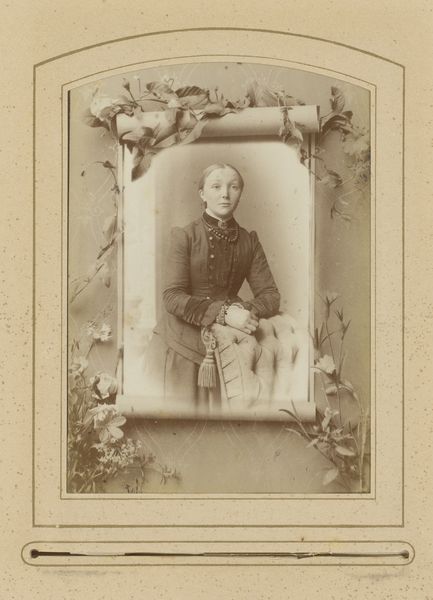
Portret van een staand meisje bij een fauteuil, aangeduid als Saakje Anema 1873 - 1909
0:00
0:00
photography
#
portrait
#
photography
#
historical photography
#
19th century
Dimensions: height 85 mm, width 52 mm
Copyright: Rijks Museum: Open Domain
Curator: This photographic portrait, attributed to Idanus Hendrikus Slaterus and created sometime between 1873 and 1909, captures a young girl identified as Saakje Anema. It's a rather formal piece. Editor: There's something melancholy about it. The austere backdrop, her stiff posture... the textures look so tactile but feel so distant. What a great use of light and shadow on that tufted chair. Curator: Indeed. Consider the rise of photography at this time and how it democratized portraiture. It became more accessible to the middle class, though still imbued with certain performative aspects. The choice of garments, for instance, reflects societal expectations, signaling status. Editor: You know, looking closer, her dress, while probably quite lovely, appears almost heavy in the image. The way it drapes, the density of the lace...and it really speaks to the labor involved, doesn't it? Both in its making and in its maintaining. Someone had to meticulously clean and care for such intricate fabric. Curator: Absolutely. The photograph serves as a material record of both individual and broader cultural identity. Think about the conventions of portraiture—the sitters pose in certain ways, often holding specific objects, surrounded by furniture to tell a story. This piece highlights the visual codes operating at the time. Editor: That button-tufted chair is fascinating. I mean, imagine the craft and hours devoted to something purely for display of status. How different the chair would appear in our modern age. Is it something that speaks to quality and wealth in any time period, regardless? Curator: It would appear so. The photograph also makes the chair into more than just a thing; it’s now part of a dialogue around representation. Its status symbol in a visual and material context, both. Editor: The materiality is now locked into that single still moment, right? The process of creating the photograph itself - the glass plate negatives, the chemical development – adds another layer to that feeling. The photo itself is its own historic relic. Curator: Precisely. A window into a world, both frozen and yet still in flux, constantly revealing new interpretations with each passing year. Editor: That sense of layering is fascinating. Well, I think it offers a rich and complicated texture, indeed, of social class and the weight of materialism!
Comments
No comments
Be the first to comment and join the conversation on the ultimate creative platform.
